Nature Trails: Walter Sisulu Botanical Gardens a winter paradise of colour

Armed with my notepad, field guides, backpack and my Nikon CoolpixL820 if went to one of my special places. I find the gardens spectacular even in the winter months. There is an abundance of subject material and I get lost for hours at a time. My family know not to expect to see me for the next 6 hours. It is one of the few places that I as a woman can go alone and explore the koppies and trails without feeling threatened the only danger would be to step on a poor surprised puff adder!! It does get rather hot out there especially up on the koppies so some cold bottled water is a must. I always pack around 2 - 3 litres and some Llama Bars. My big Indiana Jones hiking hat and lots of sunscreen with my trekking poles. In summer I prefer to wear gaiters just in case I encounter a snake. Another reason to take along walking sticks, the more noise you can make along the long grass the less chance you will accidently stand on one of these guys.
Blacksmith Plover (Venellus armatus) or Blacksmith lapwing
They are noisy and conspicuous birds. They spend most of their time on the ground searching for food or tending to chicks.
Their numbers have increased during the past century because they are highly adaptable and settle in well into modified and artificial environments like large water features and artificial wetlands. Found singly, in pairs or in small groups
This stunning bird has a black bill and legs. Pied plumage with grey wings and mantle. It call: Metallic "tink-tink-tink". In fact this is how it gets its name, its alarm call sounds similar to a blacksmiths hammer striking etal. In Africa this species is also commonly refereed to as "Bontkiewiet".It calls repeatedly when disturbed. It is distributed throughout Southern and Eastern Africa where is lives in the Savanna Grasslands, wetlands, riverine forest and moist grasslands and on the margins of inland water bodies.
Depending on the environmental conditions they are sedentary, nomadic or migratory. In dry years they may move for arid regions to areas with more rainfall. it is usually sedentary when breeding. Females are larger than the males. It is really entertaining when there are a few of them and they start to communicate with one another. As mentioned most of their foraging takes place on foor when they run around scanning the area for small aquatic and terrestrial invertebrates to eat, like insects, worms, dragonfly nymphs, insect larvae, beetles, ants, molluscs and crustaceans and even some plant material. Love sitting and watching their antics, such entertaining birds!
This plant has many names Bird of Paradise, Strelitzia, Crane Flower. The scientific name commemorates Charlotte of Mecklenburg-Strelitz, queen consort of the United Kingdom, wife of H.M. King George lll. Another one of my favorite wild flowers, they bring back many happy childhood memories for me!
In South Africa it is commonly called the crane flower and is featured on the reverse of the 50 cent coin. They are pollinated by sunbirds which use the spathe as a perch when visiting the flowers. The weight of the bird when standing on the spathe opens it to release the pollen onto the birds feet, which is then deposited on the next flower it visits.. Strelitzia lack natural insect pollinators in places without sunbirds, plants in this genus generally need hand pollination to successfully seed.
SA Tree no 731 Brachylaena transvaalensis. Forest Silver-oak
This is a shrubby tree with dark green, glossy leaves. The Leaves are white-felted on the underside and have a tapered base and apex. often forming a drip tip. Margins can be wavy, slightly toothed or entire. Trusses of creamy flowers appear in July-Sept, flower stalks absent or very short. fruit dry, bristly dispersed by wind. Quick growing and does not have invasive roots. Grows to 15 m. It is drought resistant, required full sun, has medicinal use ( used by native Africans and European settlers to treat kidney conditions, diabetes, gastrointestinal bleeding, intestinal parasites and chest pain., evergreen, semi-shade and has useful wood that is strong, hard, fine-grained wood is used for numerous purposes including hut and boat building, fence posts and spear shafts, as well as hoe and axe handles.
I started my hike through the tree trails which run along the river and you will weave in and around trees of all sizes, the area is lovely an cool and the sound of the water gushing below is really fantastic. You will also come across several butterflies and grasshoppers along this route.
Ribbon leaved Nerine. A hardy shrublet with dark green leaves bearing dens cluster of violet flowers during autumn and winter. It is visited by butterflies and it serves as a larval host plant to three species of butterflies.. Found in the forest margins and along small stream
Beatiful purple, red and lilac seeds of one of the forest bulbs
SA Tree no 145
Gnarled and twisted small tree. The Bark is rough and peels off in long strips.
The leaves are deeply toothed, dark green above and silky white below. they have a strong scent when crushed.
Small starry yellow-green flowers in spikes on the tip of the branches. Fruite is hardly visible in old flower bases. Game browse on the young leaves. It is excellent firewood. Occurs in the high-altitude grasslands and often along streams. Easy to propagate, fast-growing. Good for bonsai.

SA Tree no 536: River Bushwillow.
Glossy slightly drooping foliage, turning deep red in autumn. The tree is often multi stemmed. Very small
Loved the way the sunlight caught the huge leaves of the "wild banana" plant
White / Giant Bird of Paradise / Wild Banana will have blue and white strelitzia flowers
They have 1.8m long leaves which are grey green and arrranged like a fan at the top of the stems
Playing with the bright green and browns of the new and old leaves!!
SA Tree no 494.
common to high altitude areas. dark brown bark. leaves with prominent venation on lower surface and hairy pockets in vein axils. small, yellow-green, bell shaped flowers. Male and female flowers on separate trees. fruit round woody capsule splitting into 5 valves revealing seeds in bright red coating. Host of butterfly larvae, used for magical purposes and leaves are poisonous to browsing stock.
even in winter the forest trees create a beautiful canopy and the filtered morning winter sunlight danced between the tress creating stunning lighting for some great forest shots.
Crinum latifolium
Again the light was creating fantastic shadows and the forest floor plants were glowing in the all the suns glory!!
Common, fast-growing and easy to grow from seed. The trunk is smooth and grey. Soft hair leaves turning bright yellow in autumn. Tiny yellowish flowers followed by small round fruit; eaten by animals. Wood is used for household articles: strong smell when freshly cut. The leaves are browsed. Wood used as a protective charm. it is an excellent garden tree. it is a host for butterfly larvae and it is a good bonsai tree.
One of the very old trees in the forest - it is actually huge and I have photos of me standing next to it.
Sudden and dramatic reds and bold greens bringing the forest floor alive with colour!
Dropping Clivia grows in forest, rock faces.
Grass: common wild sorghum
Even the grasses were basking in the filtered sunlight.
the fungi on this tree are really beautiful and rather large!
Orange-brown lacquered bracket - up to 500 mm in diameter. singly or in groups. cap up to 50mm thick. It is corky when young, maturing woody. the supper surfaces are shiny. Summer-autumn. on trunks of broadleaved treees.
manged to get this rather dramatic shot of the fungi


Hadeda Ibis this is a very well-known large (76c, long) and noisy bird which has iridescent shields on its wings. They foraging on lawns. It will close its nictitating membranes as it swallows a large insect of snail.. Colour is grey to partly brown. It has a narrow, white, roughly horizontal strip across its cheeks. This is sometimes called the "moustache" though it does not reach the mouth corners. the plumage over the wings has an iridescent purple sheen. the bird has blackish legs and a large grey to black bill with a red stripe on the upper mandible. the upper surfaces of the toes are of a similar red. the wings are powerful and broad, enabling quick take-offs and easy maneuvering through dense tree cover.
Love this guy he seems to have made a home here close to the river, He is usually on his own near the river embankment. This was the first time in a while that I have seem two of them together and high up in the trees. Was really excited to see him with a mate for a change. The lighting was really great and I managed to capture the red in his beak really well this time.
My favorite wild banana plant. It never fails to capture the light and create such a dramatic photo for me, I wonder how long its been there?
these trees has such interesting bark and twisted branches.
Strelitzia
Asteracea - Arctotis acaulis?
Coal - mineral of fossilized carbon - this is a combustible black or brownish-black sedimentary rock usually occurring in rock strata in layers or veins called coal beds or coal seams
Foxtail (blue) buffalo grass is named for its fluffy spikes that resembles small animal tails.
Wild Scabiose grows up to 800mm in length. Part of the honeysuckle family. another common name is pincushion flowers. some species are annuals and others perennial. Traditionally the roots and leaves of Scabiosa colubaria were used medicinally to treat ailments like colic, heartburn, sterility and painful menstruation. grounded roots were used to make baby powder. This species is also grazed by livestock and the fainlty scented flowers are used in flower arrangments and make good cut flowers with a long vase life of up to 8 to 10 days. they also make an excellent border or rockery plant.
After the flowers have dropped , the calyces together with the bracts form this spiky ball that may be the reason for the common "pincushion" name. They calyx is persistent and remains as a crown on the fruit after it is shed. the corolla has four to five lobes fringing a narrow funnel with a furry throat and the funnel being somewaht longer than the lobes. The flowers have four stamens each and they are set high in the tube and stick out. each fruit only had one seed.

The leaves of most species are somewhat hairy and partly divided into lobes but a few are smooth and some species have simple leaves. The flowers are borne on inflorescences in the form of heads, each head has many small florets and each floret is cupped in a membranous, saucer-shaped bract. The calyx has five sepals in the form of awns almost as long as the petals. The scabiosa species and varieties differ in the colours of their flowers however most will be a lilac, soft lavender blue or a creamy white in colour.
all Cycads in South Africa belong to the genue Encephalartos. The stately beauty of these ancient plants together with the status of owning one has sadly added to the stripping of wild populatios over the past decades. Cycads today are the most highly protected group of plants.
They have become a national icon ad rank first among the "Big 5" of the plant kingdom.In appearance they resemble palms trees and tree ferns however they are not related. Cycads grow extremely slowly and produce a new whorl of leaves every three to four years. the older leavs die off leaving a compact ring of leaf bases, which then form a continuous and slowly lengthening stem. These stems will grow between 4-5m and will end up leaning in a prostrate postion. The mature plants sucker easily and continue to give rise to new stems which will continue to replace the older ones. You can count the leaf rings and this will assist in estimating the age of the stems which usually made up of hundreds of years!. The really cool thing is the age of the orignianl plant that had the continual succession of new stems replacing the old stems could be many thousands of years old.
Cycads possess an auro of mystry as one of the most primitive, living seed beaing plants. They belong to the ancient group of plants known as Gymnosperms (Greek for naked seeds).They produces seeds in cones as seen in the photo I took, below. Most modern plants will reproduce seed enclosed in an ovary further evidence of its ancient roots. Extensive fossil records mention that Gymnosperms were the dominant vegetation type during the warm, humid Carboniferous period of the earths history between some 60 million to 70 million years ago - when the vast coal beds were formed. Cycads are survivors of that lost world and can be described as a fossil plant that occur and thrive in a variety of habitats from our dry karoo hills to the highlands grasslands and subtropical forests and woodlands. pollinations is via wind and the males have to be in the vicinity for successful pollination to occure. Male and female cycads can only be distinguished when the plants form cones.

Crassula multicava - Fairy Crassula - Skaduplakkie (Afrikaans) and Umadinsane (Zulu). A stunning low growing plant with succulent green leave. it bear a mass of tiny pink star-shaped flowers on long stalks. Ecological Benefits: its a host plant for larval of some butterflies and moths. They are really low maintenance and if affected by frost will quickly recover in spring. requires moderate water and is a popular ground cover for gardens and is ideal for planting under the shade of tress and can also be grown in a rockery. Flowers from May though to November. size is .0.2m x o.3 m (flowers)
really love this plant they are so tiny and they really do look like little fairies!!
A weavers nest hard to say exactly which one for this photo I took, but it could be either masked weaver or lesser masked weaver nest
Hilton Daisy - grow up to 300 mm, its a Perennial herb and leaves are up to 80 mm long. flower heads are up to 60 mm. flowers August/November . Widespread in grasslands in summer rainfall areas.
Once the pods ripen they burst open releasing the seeds from a bed of a sticky green substrate. the fruit pulp and seeds are then eaten by waiting birds like the grey go-away birds, brown-hooded parrots, barbets and hornbills. We as the humans can actually such on the seeds as they are considered a tonic!!
The sjambok pad is believed to have magical powers and the Shangaan tribe would cook it over coals from the tree to ensure a successful hunting trip. Personally I have not tried this yet! The smoke from the burning branches is believed to be very effective in combating headaches. the wood is used in the making of household goods because the wood is both hard and works easily. Its enemy is the wood-boring insects which damage the wood.
The sjambok pod regularly grows on termite mounds as they are more fertile than the surrounds soils due to the activites of the trmines. The termites will aerate and moisten the soil and add organic material making it perfect for the pod.


Pods of the Sjambok pod (Long-tail cassia). This tree is at its most spectacular at the onset of spring when the tree flowers abundantly in an otherwise dry landscape. The flower are a gorgeous bright yellow large up to 5x7 cm and sits on a long stalk. They tend to cluster together towards the ends of the branches producing sprays reaching some 20cm in length in spectacular fashion a sight truly to behold!!

Porcupine dung. I will always find their dung along the pathways anywhere I hike. They are our biggest rodent. Their bodies are covered with their characteristic sharp, black and white quills and flattened bristle. The males weigh in at 10-19 kg and the females 10-24kg. they will often roam alone but can make use of a communal shelter of up to 4 porcupines. They are nocturnal but it will lie in the sun at the edge of its shelter. It stands very still if disturbed so it is often missed, personally I find them to be really sneaky buggers!. They are very adaptable and found in most of the vegetation areas but it does prefer broken country with rocky hills and rocky reefs, so these botanical gardens are perfect for the little guy. Shelters in caves, crevices and in antbear and other holes that it adapts. you can find a large number of bones which they carry, around the holes. It moves noisily down footpaths as it rubs, grunts ans sniffs and is a noisy grazer. along the path you will find dug up bulbs, half eaten with teeth marks, usually they are the culprit! They will also eat tubers roots, fruits, bark, carrion and vegetables. it communicates and vocalizes by rattling the tail quills, grunts, sniffs and chatters its teeth. Only 1-3 young are born after a gestation of around 3 months. One of my favorite rodents and such a character!!
Scattered all over the pathways and ground is the white rocks called quartz

Forest Lily, sandui (sand onion), winter red hot poker a beautiful bulb
This beautiful ridge above the water fall showing the sequence of quartzite and shale, cut by later faulting and to be more specific Orange Grove quartzite and Parktown shales. forms part of the Geological 3.5km trail and returns via outcrops of 3 500 million year old talc schist of the underlying greenstone formation. Some of the oldest rocks in the world are here.
seed pot!!

The distinctive and unique "cabbage tree" on of my bushveld favorites, always sticks out a mile away especially against the browns and dry regions.
What I did not know is there are a few variations of this awesome looking tree. There is the Natal Rock Cabbage Tree (Cussonia natalensis), the Common Cabbage Tree (Cussonia spicata) also known as the spiked cabbage tree, lowveld cabbage tree The Mountain Cabbage Tree (C. paniculata), the Natal Forest Cabbage Tree (Cussonia sphaerocephala) and finally the False Cabbage Tree (Schefflera umbrellifera) The one in the picture is the Highveld Cabbage Tree (Kiepersol)
The cabbage tree occurs naturally in southern Africa and into tropical Africa.
It is a cultivated garden plant and used in many displays due to its uniqueness.
It does not tolerate extreme degrees of frost and its one of the elephants favorite treats.

It has been used forever in traditional African medicine and its medicinal properties are currently been investigated. As someone who studied Aromatherapy for 2 years and as a medically qualified person i cant wait to see what the outcome of this research will be. The bark is used in the treatment of malaria and indigestion, treat fever, venereal disease, as a diuretic and laxative and mental illness.
The nest in the above photo is what we call a "platform" nest Birds like darters, herons, storks, pigeons, doves and some birds of prey will build simple platforms of sticks or twigs on convenient branches of trees. the bids that build these nests usually lay white eggs that to most predators denote that they are an unlikely to taste good!! the parents will still need to ted to keeping the eggs covered and hidden most of the times. the chicks are born altricial. this means they are born naked, blind and unable to move around.
the gorgeous rock formations, they leave me in awe and each timeI go I discover something new!
buffelo grass

Just love these rocks millions of years old!!


A bulbul hiding in the follage on the far right
Kalanchoe thyrsiflora, grows ups to 1 m ad is a rather robust succulent maturing over a 3-4 year period, then dying off after flowering. Large leaves appear at the base which are up to 150x60mm big. inflorescence up to 150 mm long and flowers February to July, so this one is nearing the end of its flowering cycle. Found on the rock outcrops as this one I photographed as well as in grasslands. it was by itself and stuck out rather majestically against the dry winter background.



Common Sugar Bush ( Protea carffra) are found all over the koppie and along the pathways. It is a real treat when they flower!
beautiful quartzite
Funnel spider tunnel web in a crevice the grass had recently burned and it was much easier to spot these awesome webs woven with such delicate precision!
had some camera fun with the stunning webs
Hilton Daisy always dramatic!
just loved photographing these with the lighting and stark burnt background. Too be honest if a funnel spider had jumped out I would have pooped myself, I was rather glad I had an adequate zoom lense to capture these fantastic webs.
spotted many webs along the grasslands and burnt slopes
Mountain Dahlia - Crotalaria globifera


my "Phantom of the Opera" rock with the stunning white of the quartizite
"seams" of quartzite is everywhere on the top of the koppie and along the ridge
Human imprint!!!
the Blue Pansy is attracted to the hilltops and the male defends its territory against the other males. found during the warmth of the day, will often settle on the ground with winds flat, making identification easy. found in woodlands, and bushveld throughout South Africa
Blue Pansy Butterfly - I found these usually up at the top of the Koppie, there is one spot where I can find up 5 different types of butterflies flying and seemingly chasing each other. Not always easy to photograph then - takes hours of patience something I lack!! One butterfly a beautiful yellow one the "Autumn leaf Vagrant" has eluded my lense. I am on a mission to photograph this gorgeous butterfly who will only rest for a micro second then fly off.!
Helichrysum cooperi - Everlasting flowers these grow up to 750 mm. Erect annual and branched inflorescence and are widespread in grassland and on disturbed ground in summer rainfall areas.
Beautiful Igneous rocks - Igneous is the Latin name for fire. Igneous rocks are formed when hot magma (a molten or semi-liquid mass of various elements and even solid rock pieces) rise up from the upper mantle or the lower crust. It cool down and solidifies as igneous rock. the two main factors that affect the nature of igneous rocks are the rate at which the magma cools down and the chemical composition of the rocks.
Igneous rocks are classified into two types: extrusive igneous rocks and intrusive igneous rocks.
Depending on the conditions under which the magma cools, igneous rocks may be course grained which cooled down slowly or fine grained which cooled down rapidly
Sedimentary rock are composed of geological materials formed when particles of mineral organic matter are compacted after they have been deposited by the action of wind or water. they are formed through either mechanical processes or composed of organic matter. Examples are sandstone, shale limestone, bituminous coal, conglomerate / breccia
Metamorphic rocks are formed by means of an increase in temperature and pressure. when a rock is exposed to high temperature or pressure for a long period of time the mineral that make up that rock that changes quite dramatically to alter the character of the rock completely. recrystallisation of this type under the influence temperature and pressure without any melting the rock known as metamorphism. Quartzite slate, schist, marble, anthracite / graphite and gneiss are all metamorphic rocks
Hiking in one of my all time favorite spots!!

I cannot wait for spring where new growth and wild flowers will abound and I am really excited to share the absolute beauty our Botanical Gardens will reveal to you. Look forward to sharing my Spring experiences and hikes with you.
Adventure with a purpose!™
The Team Zodwa Project ™
Member: FGASA (Field Guides Association of Southern Africa)
Photo Credits: Kim Williams CopyrightMember: FGASA (Field Guides Association of Southern Africa)
_______________________________________
Warmest
Kim Williams | Adventurer | Founder The Team Zodwa Project & Adventure with a purpose | Finalist Johnny Walker/Sunday Times Nation’s Greatest Hero Award | #Reachoutbeahero & #Adventurewithapurpose & #Trek4Hunger Ambassador |Brand Ambassador Eatfresh SA| Public Speaker|Facilitator| Outstanding Founders list @MagnificHQ |Outstanding People List @GirlsRunThings | Blogger| Fizzical National Everyday Hero Winner
Mobile 083 962 6707
Twitter @777adventurekim
Facebook adventurekim.com777
Blog mountaingirl777.blogspot.com
“Life is an adventure…so live it. It’s your choice!”™
The Team Zodwa Project ™
Reach out...be a hero!™
_______________________________________



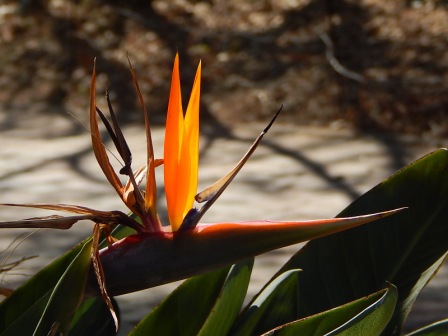









































































































































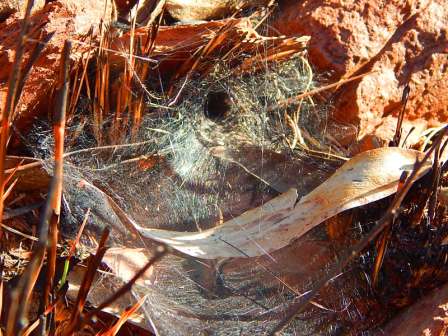












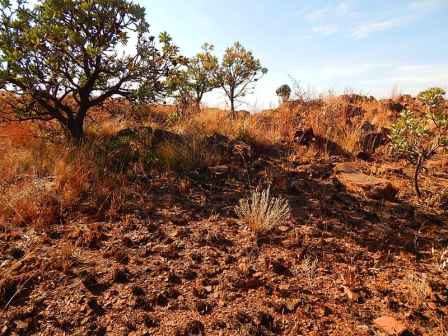



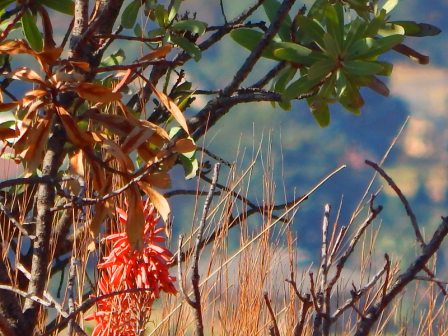












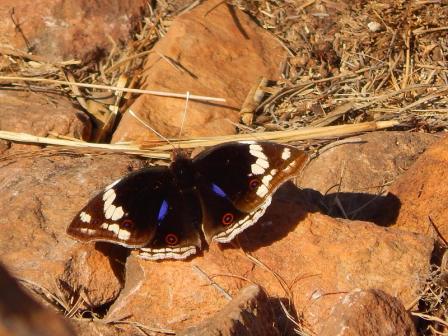






































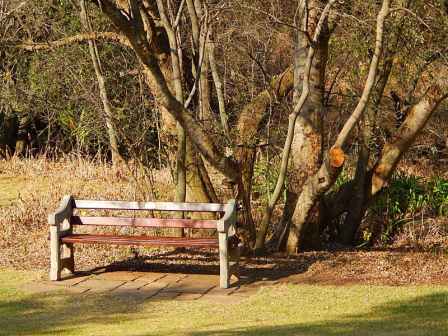


.png)




